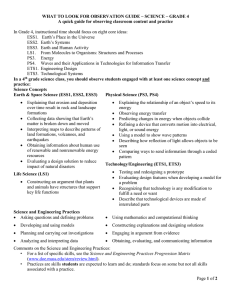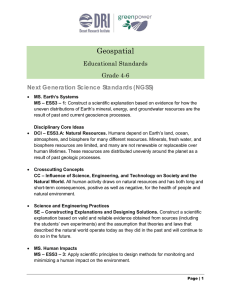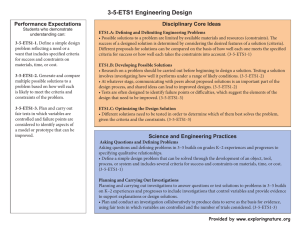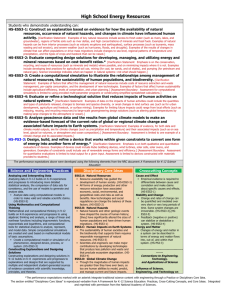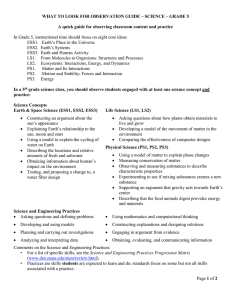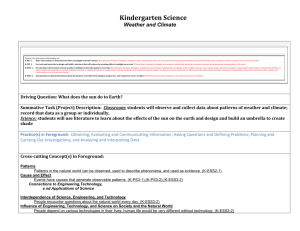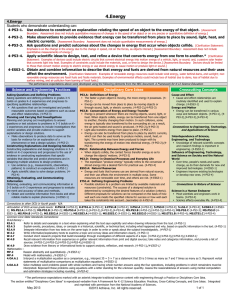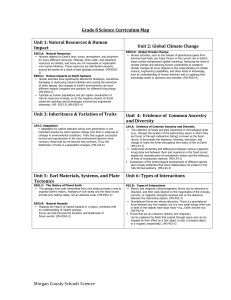Next Generation Science Standards (NGSS) SENSE IT aims to
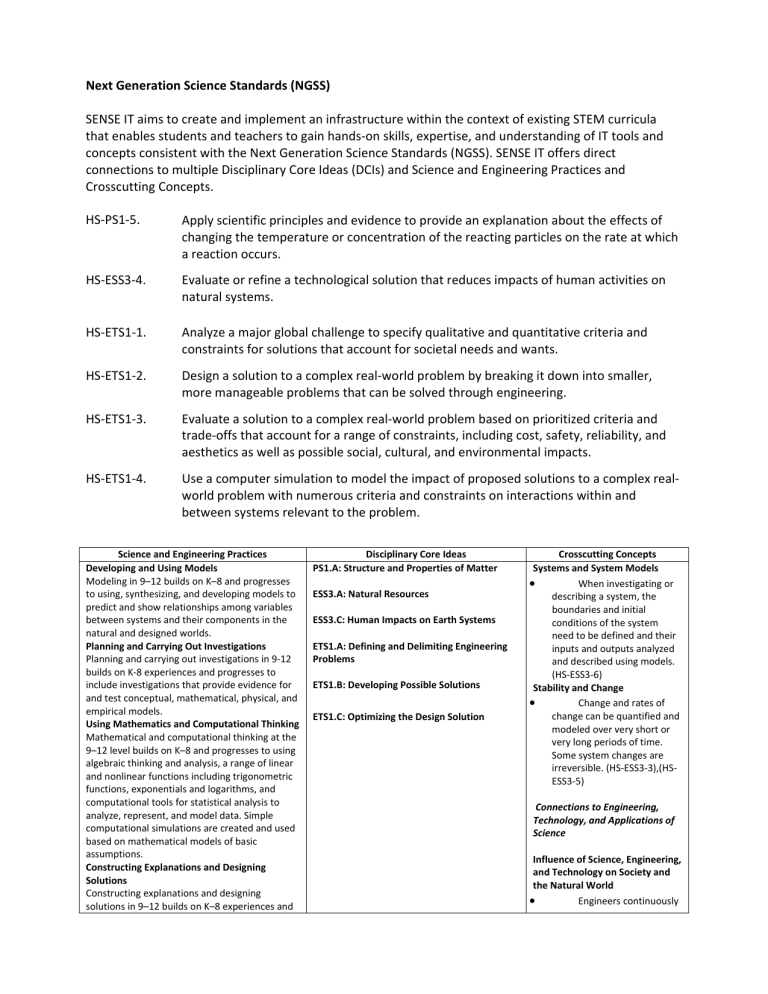
Next Generation Science Standards (NGSS)
SENSE IT aims to create and implement an infrastructure within the context of existing STEM curricula that enables students and teachers to gain hands ‐ on skills, expertise, and understanding of IT tools and concepts consistent with the Next Generation Science Standards (NGSS).
SENSE IT offers direct connections to multiple Disciplinary Core Ideas (DCIs) and Science and Engineering Practices and
Crosscutting Concepts.
HS ‐ PS1 ‐ 5.
Apply scientific principles and evidence to provide an explanation about the effects of changing the temperature or concentration of the reacting particles on the rate at which a reaction occurs.
HS ‐ ESS3 ‐ 4.
Evaluate or refine a technological solution that reduces impacts of human activities on natural systems.
HS ‐ ETS1 ‐ 1.
HS ‐ ETS1 ‐ 2.
HS ‐ ETS1 ‐ 3.
HS ‐ ETS1 ‐ 4.
Analyze a major global challenge to specify qualitative and quantitative criteria and constraints for solutions that account for societal needs and wants.
Design a solution to a complex real ‐ world problem by breaking it down into smaller, more manageable problems that can be solved through engineering.
Evaluate a solution to a complex real ‐ world problem based on prioritized criteria and trade ‐ offs that account for a range of constraints, including cost, safety, reliability, and aesthetics as well as possible social, cultural, and environmental impacts.
Use a computer simulation to model the impact of proposed solutions to a complex real ‐ world problem with numerous criteria and constraints on interactions within and between systems relevant to the problem.
Science and Engineering Practices
Developing and Using Models
Modeling in 9–12 builds on K–8 and progresses to using, synthesizing, and developing models to predict and show relationships among variables between systems and their components in the natural and designed worlds.
Planning and Carrying Out Investigations
Planning and carrying out investigations in 9 ‐ 12 builds on K ‐ 8 experiences and progresses to include investigations that provide evidence for and test conceptual, mathematical, physical, and empirical models.
Using Mathematics and Computational Thinking
Mathematical and computational thinking at the
9–12 level builds on K–8 and progresses to using algebraic thinking and analysis, a range of linear and nonlinear functions including trigonometric functions, exponentials and logarithms, and computational tools for statistical analysis to analyze, represent, and model data.
Simple computational simulations are created and used based on mathematical models of basic assumptions.
Constructing Explanations and Designing
Solutions
Constructing explanations and designing solutions in 9–12 builds on K–8 experiences and
Disciplinary Core Ideas
PS1.A: Structure and Properties of Matter
ESS3.A: Natural Resources
ESS3.C: Human Impacts on Earth Systems
ETS1.A: Defining and Delimiting Engineering
Problems
ETS1.B: Developing Possible Solutions
ETS1.C: Optimizing the Design Solution
Crosscutting Concepts
Systems and System Models
When investigating or describing a system, the boundaries and initial conditions of the system need to be defined and their inputs and outputs analyzed and described using models.
(HS ‐ ESS3 ‐ 6)
Stability and Change
Change and rates of change can be quantified and modeled over very short or very long periods of time.
Some system changes are irreversible.
(HS ‐ ESS3 ‐ 3),(HS ‐
ESS3 ‐ 5)
Connections to Engineering,
Technology, and Applications of
Science
Influence of Science, Engineering, and Technology on Society and the Natural World
Engineers continuously
progresses to explanations and designs that are supported by multiple and independent student ‐ generated sources of evidence consistent with scientific ideas, principles, and theories.
Analyzing and Interpreting Data
Analyzing data in 9–12 builds on K–8 experiences and progresses to introducing more detailed statistical analysis, the comparison of data sets for consistency, and the use of models to generate and analyze data.
Engaging in Argument from Evidence
Engaging in argument from evidence in 9–12 builds on K–8 experiences and progresses to using appropriate and sufficient evidence and scientific reasoning to defend and critique claims and explanations about natural and designed world(s).
Arguments may also come from current scientific or historical episodes in science.
modify these technological systems by applying scientific knowledge and engineering design practices to increase benefits while decreasing costs and risks.
(HS ‐ ESS3 ‐
2),(HS ‐ ESS3 ‐ 4)
New technologies can have deep impacts on society and the environment, including some that were not anticipated.
(HS ‐ ESS3 ‐ 3)
Analysis of costs and benefits is a critical aspect of decisions about technology.
(HS ‐ ESS3 ‐ 2)
Connections to Nature of Science
Science is a Human Endeavor
Science is a result of human endeavors, imagination, and creativity.
(HS ‐ ESS3 ‐ 3)
Science Addresses Questions
About the Natural and Material
World
Science knowledge indicates what can happen in natural systems—not what should happen.
The latter involves ethics, values, and human decisions about the use of knowledge.
(HS ‐ ESS3 ‐
2)
Many decisions are not made using science alone, but rely on social and cultural contexts to resolve issues.
(HS ‐ ESS3 ‐ 2)

